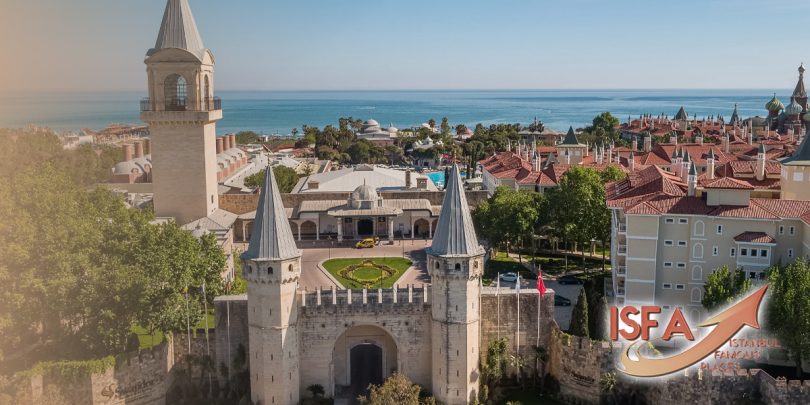Are you looking for your next tourist destination in Istanbul? The Topkapi Palace Museum is your best bet.
The Topkapi palace is a majestic and iconic building in Istanbul. It is one of the most popular tourist attractions in the metropolis, holding deep significance and history in Turkey.
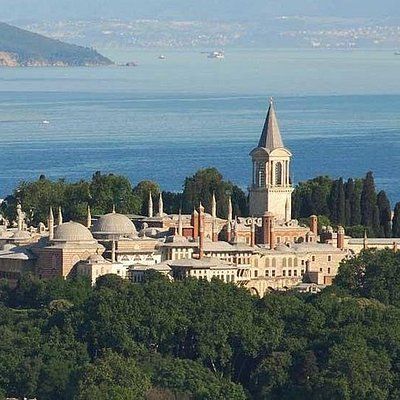
Topkapi palace is a museum in Istanbul that displays the imperial collections from the history of the Ottoman Empire.
Popular among the Turks as Topkapi Sarayi, every inch of this place speaks volumes about the grandeur of Hurren Sultan, the Ottoman Kings, and the culture in its purest forms.
History of Topkapi Palace
The Ottoman king, Sultan Mehmed II, ordered the construction of the Topkapi Palace in the late 1450s.
The Ottoman king got the palace built after conquering Constantinople, the present Istanbul, which was the capital of the Byzantine Empire in 1453.
Due to an already existing palace in Beyazit square, the Topkapi palace was initially called Yeni Saray (the New Palace).
In the 19th century, from Yeni Saray to Topkapi (Canon gate), the palace served as a residence and administrative headquarters of powerful sultans of the Ottoman Empire in the 15th century.
The Topkapi Palace has undergone a series of renovations over the centuries.
In 1509 some notable renovations took place due to earthquake damages, and in 1665 due to fire damage.
The palace housed up to 1,000-4,000 people, in addition to about 300 people in the Harem.
The Topkapi Palace starting served as a museum from 1924 onward. Since then, it’s been a zone for tourists.
Things to see at Topkapi Palace
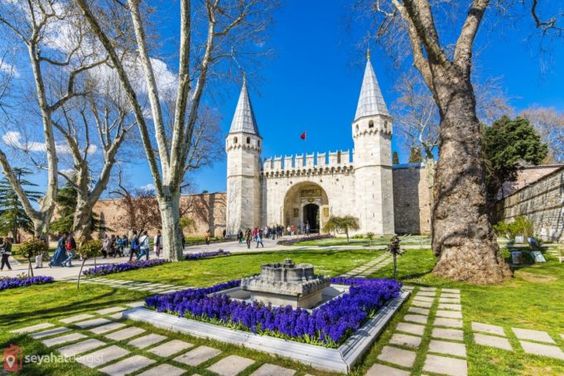
The Topkapi palace is a magnificent building, with a very detailed design and architecture.
A spectacular imperial gate adorns the entrance of the building, and a beautiful rococo-style fountain of Sultan Ahmed III embellishes the courtyard.
The interior of the palace contains four courtyards, and other smaller structures, including the harem, surrounded by high walls. While female family members resided in the Harem, the imperial council building was in use for holding important meetings.
The Topkapi Palace stood out with its structure, which included kiosks, pavilions, barracks, kitchens, sleeping quarters, and visitor’s chambers. Each courtyard, separated by a gate that restricted entry, had a separate purpose. The most private courtyards are the third and the fourth one.
The First Courtyard
The first courtyard is also known as the outer courtyard and is the largest of all. Guarded by the imperial gate, this courtyard was ideal for processions and ceremonies.
The Second Courtyard
Guarded by “the gate of salutation,” the second courtyard was also known by the name the Divan square.
It was the administrative center of the palace. This is because only official members of the court and council members were welcome here.
Meetings used to take place in the domed hall (also called Council Hall).
The Tower of Justice is a small room adjacent to the domed hall. It is the palace’s tallest structure. This was where the Sultan stayed to listen to the meetings secretly without being seen.
The second courtyard was also home to kitchens, a bakery, and an external treasury. This treasury displays imperial weapons and porcelain collections.
The Third Courtyard
Guarded by the canopied gate of Felicity, the third courtyard housed the private residence of the Sultan. The inner palace school is also located here.
Only the Sultan, family members, servants, and some visitors had access to this courtyard.
Visitors granted access could only come into the Audience Chamber. Visitors were not allowed to have eye contact with the Sultan. Instead, they bowed their heads and spoke to the Sultan’s translator.
Before Murad III moved his residence, to the harem, the sultans usually stayed in the third courtyard. They stayed in an area called the Chamber of Holy Relics.
The Pavilion of the Conqueror, found in the third courtyard, harbored imperial jewels. One of the largest cut diamonds in the world was found amongst the imperial jewels.
The Library of Sultan Ahmed III is at the center of the third courtyard. This library is lavishly decorated, with painted tiles, and stained glass windows.
The books in this library were eventually put together with other palace books and moved to the Mosque of Aghas. Books contained in the Topkapi palace include rare manuscripts, early copies of the Quran, etc.
The third courtyard connects to the fourth courtyard.
The Fourth Courtyard
The fourth courtyard consists majorly of pavilions and terraced gardens.
The Circumcision chamber lies in this courtyard and is lavishly decorated.
The Baghdad Pavilion and the Yerevan Pavilion are also found in this courtyard.
The quaint gilt-bronze Iftar Pergola is where sultans broke their fast if Ramadan fell in summer. This is also found in the fourth courtyard.
The Ottoman Sultans had an interest in gardening, and as such, surrounded themselves with flowers and gardens.
The Harem
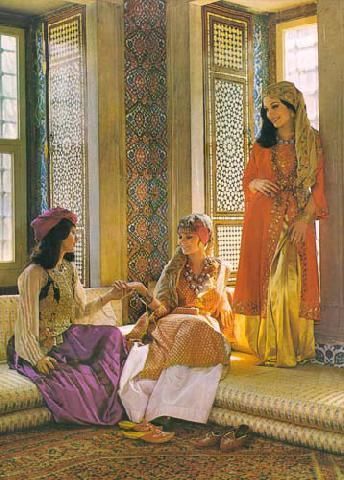
The Harem was a residential quarter for the sultan’s family. It was allocated based on gender.
In the 16th century, Murad III converted the Harem into the sultan’s residence. Murad III built apartments in the Harem and stayed there.
Due to continued renovations, the Harem expanded into a maze-like layout. To enter or exit the Harem, you have to enter through the Main gate, also called the Royal gate. To get to the Royal gate, you’ll have to pass through the paved courtyard of the black eunuchs.
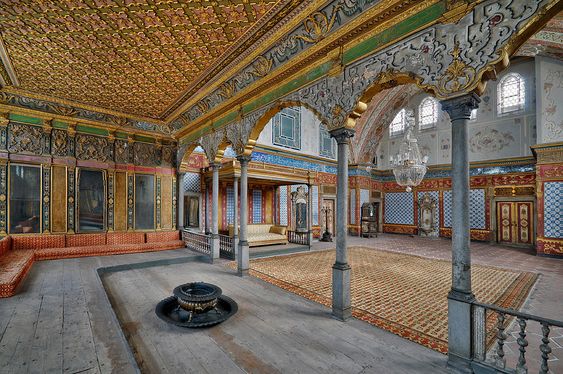
The black eunuchs guarded the Harem and received wages for their service. Harem’s largest and most central courtyard can be seen after the Main gate. This courtyard is called the Courtyard of the Queen Mother.
The Queen mother is said to be the center of power in the Harem. She is the chief consort whose son has ascended the throne. The Queen’s mother is also called “Valide sultan.” Other Sultans stop at her centrally located residence to inform her of the state affairs.
Is there a gate fee for the Topkapi Palace Museum?
You will need to buy a ticket to visit the palce. The best would be to buy a musuem card available at the counter, as with that you can travel all other museums in Turkey as well.
The gate fee or ticket to take a tour of Topkapi Palace is around 200 Turkish Liras.
What are the Opening hours for the Topkapi Palace Museum?
The Topkapi Palace Museum is open:
- Summers from 9 a.m. to 6 p.m.
- Winters from 9 a.m. to 4:30 p.m.
The Topkapi Palace is closed:
- On Tuesdays.
- The 1st of May (Labor day).
- The first day of Ramadan.
- On the first day of the Feast of Sacrifice.
The Topkapi Palace is a museum rooted deeply in Turkish history. Blended with its rich history, and traditions, Topkapi Palace museum is a fantastic tourist destination.

